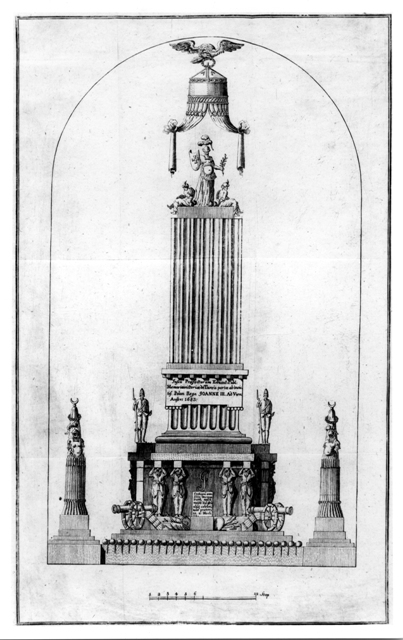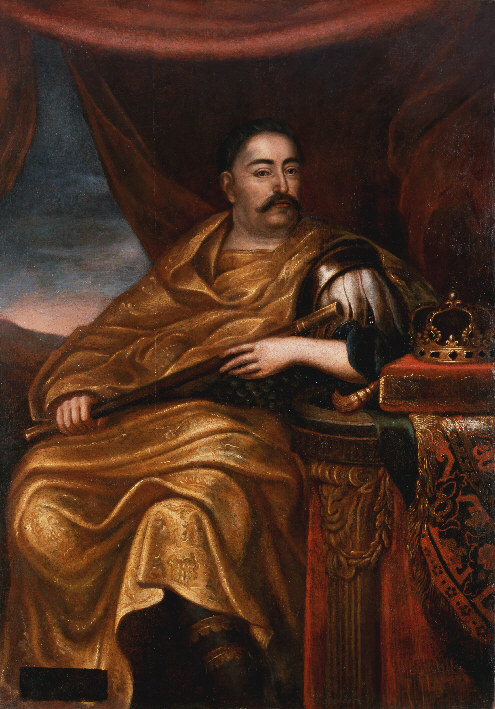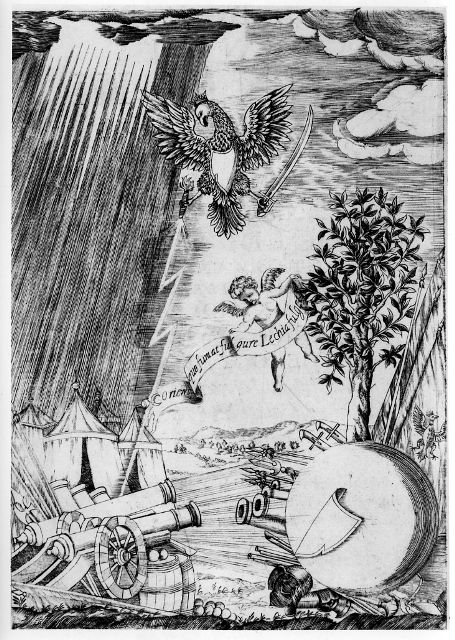The centenary of the Victory of Vienna was commemorated in 1783 in many cities of the Polish-Lithuanian Commonwealth including Warsaw, Cracow, Poznań, Kalisz, Sandomierz, Puławy, Nieśwież and Vilnius. Details of solemn celebrations are found in period press and written sources. Extant is rich material of descriptive and iconographic character pertaining to celebrations in Vilnius. They went down to posterity through a print by Marcin Poczobut-Odlanicki entitled Pamiątka stoletnia zwycięstwa pod Wiedniem przez Jana III Krola Polskiego nad Turkami otrzymanego (…),dedicated to King Stanisław August Poniatowski, published in Vilnius and typeset “in the Printing House of His Majesty at the Academy”. The third and last section of the publication contains the proper Description of the celebration of the centenary of Jan III’s Victory and is illustrated with two anonymous etchings.
They represent architectural decorations raised in the university church in Vilnius: on 11 October 1783 as a setting for exequies said for the Poles who died in the Battle of Vienna as well as those who “emerged victorious and then lost their lives while serving their homeland”; and on 12 October as a setting for a solemn thanksgiving service for the achieved victory. The monumental constructions were created by Jan Chrzciciel Knakfus (Knackfuss, died in 1794 in Vilnius), a captain of Lithuanian artillery, architect of King Stanisław August and the first professor of the Vilnius Academy.
Raised in the centre of the church on 11 October there was a pyramid also called a colossus, reaching the vault and crowned with a statue of Minerva. The goddess was holding a spear and a shield featuring a portrait of Jan III. Hovering on the front wall of the pyramid above the inscription plaque there was an eagle with a laurel wreath and lightning. Placed on the pedestal protruding ahead of a high pyramid base (called a battery by Poczobut) there were gunmetal canons on carriages and between them an allegorical image of “the Homeland wailing for the loss of her brave sons”. Pitched higher up there was a tent with patting walls lifted by two Turkish prisoners of war.
On 12 October the pyramid was replaced by a triumphal antique-like column crowned with a statue of Mars (?) and figures of two Turks. High up, underneath the vault, a White Eagle was holding the tent-canopy. The grand base supporting the column was enlivened by figures of Turks, treated as atlases supporting the cornice. Visible against the central field there was a monogram of Jan III. The previous battery with canons was left intact, only enriched with a panoply composed of Turkish trophies.
Although the author of these representative and documentary prints remains unknown, the etching depicting the above-mentioned pyramid contains the originator’s signature: Knakfuss Capit: inven: et delin:. The prints were presumably executed by one of Vilnius printmakers. It is worth adding that the occasional decorations represented therein proved to be the grandest of their time.
An anonymous engraver, based on the concept and drawing by Jan Chrzciciel Knakfus: Architectural decorations in the university church in Vilnius in 1783, etchings, publ. 1783.


